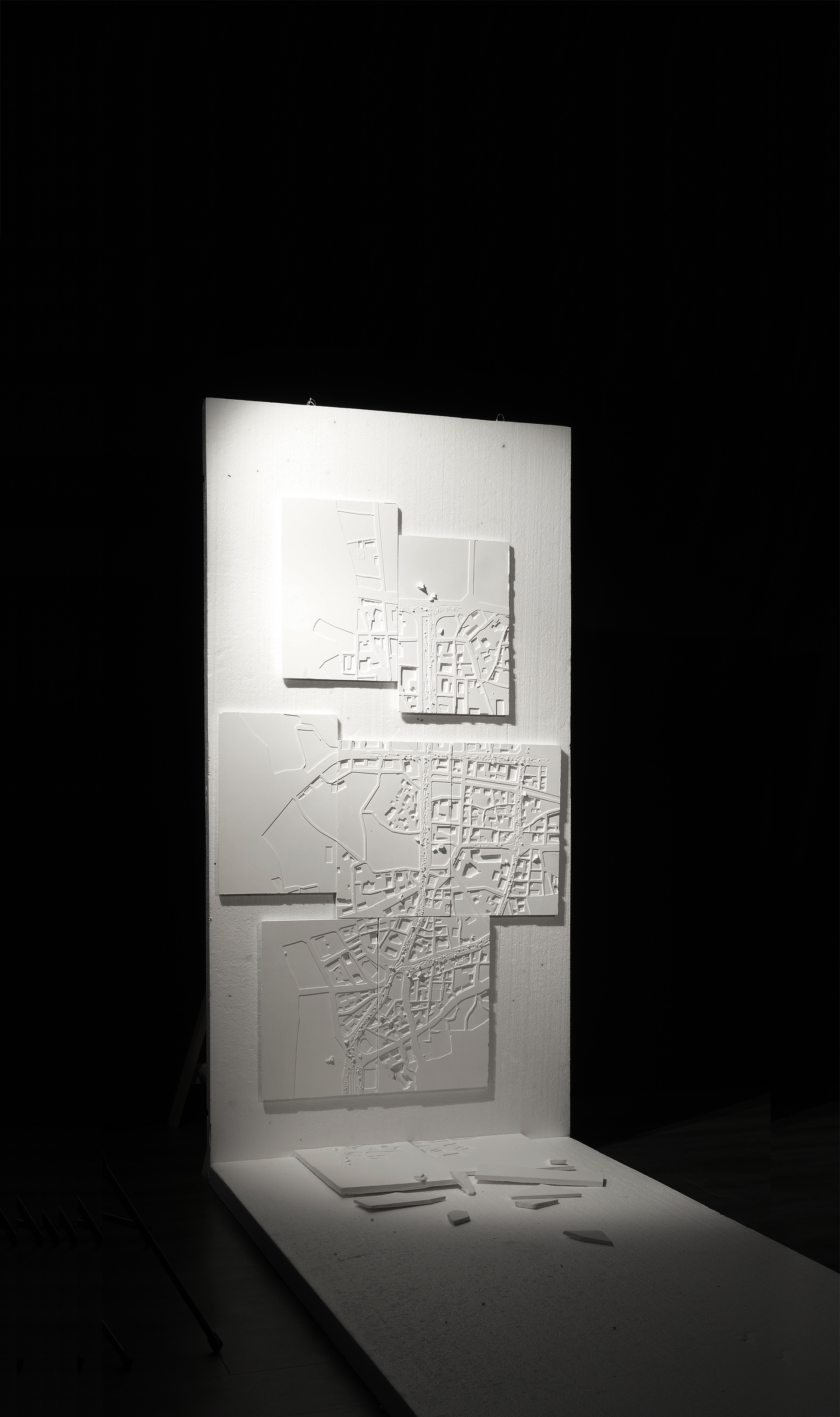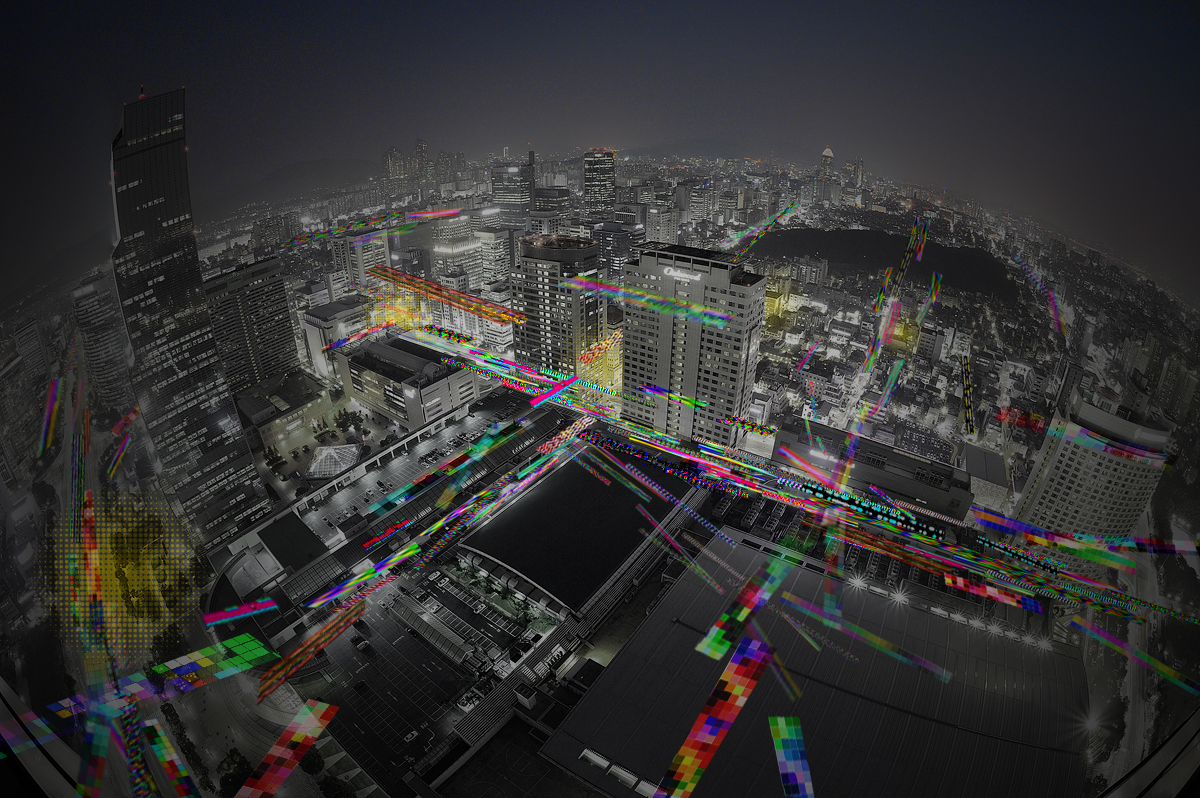#SpatialDesign #LandscapeArchitecture #Installation
Nodes and Pauses
; escape from habituation
Individual Project | 2016
Duration: 1 months
Tools: Auto CAD, Adobe Illustrator, Adobe Photoshop
Model Making: Laser Cutting, Plaster Casting
> Is habituation breakable?

Description
All present moments coexist simultaneously with the past as a whole. Time is continuously beginning at the present, even though the present time cannot exist as time perpetually moves away from the present. The past should not be segmented as fragments of memories, but rather it should be perceived as
an accumulated time that flows into the past from the present.
All of these function as landmarks, but the way of connecting them only exists as a space of passage. In routine environments,
The transformed axes in these historical gaps have been superimposed again with fragments of past memories. The buoys of memory created in the course of this superposition are represented by nodes and landmarks.
It appears as a new superposition in the form of an organic axis breathing with the periphery. The destroyed boundaries of time also break down the axis of people’s flow, allowing people to rearrange and extend the realm of perception to the periphery. This extended range of memories is another flow in and of itself, repeating
an accumulated time that flows into the past from the present.
All of these function as landmarks, but the way of connecting them only exists as a space of passage. In routine environments,
people’s memories become habitual and the flow of these memories remains locked in the consciousness and in the form of another axis.
The transformed axes in these historical gaps have been superimposed again with fragments of past memories. The buoys of memory created in the course of this superposition are represented by nodes and landmarks.
These nodes break the current and past boundaries by pausing the present, and induce dishabituation in this already habituated space.
It appears as a new superposition in the form of an organic axis breathing with the periphery. The destroyed boundaries of time also break down the axis of people’s flow, allowing people to rearrange and extend the realm of perception to the periphery. This extended range of memories is another flow in and of itself, repeating
habituation, dishabituation, and reterritorialization.
Background
The memory fragments have been superimposed over time for a long time, each of them being a patch-like memory point.
 From the past to the present of this place
From the past to the present of this place
Dishabituation
Small changes are made in this space by creating nodes in forgotten spaces with habituation of passengers. By making a very ordinary space outside the cognitive area, the habituated cognitive structure will be de-habituated and newly restructured again.

Nodes that are made by everyday space give pause to people and interact with themselves to create an organic relationship with the surroundings.
